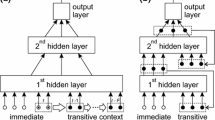Abstract
Baseball players swung very light and very heavy bats through our instrument and the speed of the bat was recorded. These data were used to make mathematical models for each person. Then these models were coupled with equations of physics for bat-ball collisions to compute the Ideal Bat Weight for each individual. However, these calculations required the use of a sophisticated instrument that is not conveniently available to most people. So, we tried to find items in our database that correlated with Ideal Bat Weight. However, because many cells in the database were empty, we could not use traditional statistical techniques or even neural networks. Therefore, three new methods were used to estimate the missing data: (i) a neural network was trained using subjects that had no empty cells, then that neural network was used to predict the missing data, (ii) the data patching facility of a commercial software package was used, and (iii) the empty cells were filled with random numbers. Then, using these fully populated databases, several simple models were derived for recommending bat weights.
Similar content being viewed by others
References
Adair, R. K.The Physics of Baseball. New York: Harper & Row, 1990, 110 pp.
Agarwal, G. C., and G. L. Gottlieb. Mathematical modeling and simulation of the postural control loop—part II.CRC Crit. Rev. Biomed. Eng. 11:113–154, 1984.
Bahill, A. T.Verifying and Validating Personal Computer-Based Expert Systems. Englewood Cliffs, NJ: Prentice-Hall, 1991, pp. 113–137.
Bahill A. T., and W. J. Karnavas. Determining ideal base-ball bat weights using muscle force-velocity relationships.Biol. Cybern. 62:89–97, 1989.
Bahill, A. T., and W. J. Karnavas. The ideal baseball bat.New Scientist. 130 (1763):26–31, 1991.
Brancazio, P.Sport Science: Physical Laws and Optimum Performance. New York, Simon and Schuster, 1984, 400 pp.
Fenn, W. O., and B. S. Marsh. Muscular force at different speeds of shortening.J. Physiol. 85:277–297, 1935.
Hill, A. V. The heat of shortening and dynamic constraints of muscle.Proc. Roy. Soc. Lond. 126B:136–195, 1938.
Jefferys, W. H., and J. O. Berger. Ockham's razor and Bayesian analysis.Am. Scientist80:64–72, 1992.
Kirkpatrick, P. Batting the ball.Am. J. Physics 31:606–613, 1963.
Law, A. M., and W. D. Kelton.Simulation Modeling and Analysis. New York: McGraw-Hill, 1991, 759 pp.
Montgomery, D. C.Design and Analysis of Experiments. New York: John Wiley & Sons, 1991, 649 pp.
Van Zandt, L. L. The dynamical theory of the baseball bat.Am. J. Physics 60(2):172–181, 1992.
Watts, R. G., and A. T. Bahill.Keep Your Eye on the Ball: The Science and Folklore of Baseball. New York: W. H. Freeman, 1990, 213 pp.
Wilke, D. R. The relation between force and velocity in human muscle.J. Physiol. 110:249–280, 1950.
Williams, T. and J. Underwood.The Science of Hitting. New York: Simon and Schuster, 1986, 88 pp.
Author information
Authors and Affiliations
Rights and permissions
About this article
Cite this article
Bahill, A.T., Freitas, M.M. Two methods for recommending bat weights. Ann Biomed Eng 23, 436–444 (1995). https://doi.org/10.1007/BF02584443
Received:
Revised:
Accepted:
Issue Date:
DOI: https://doi.org/10.1007/BF02584443




